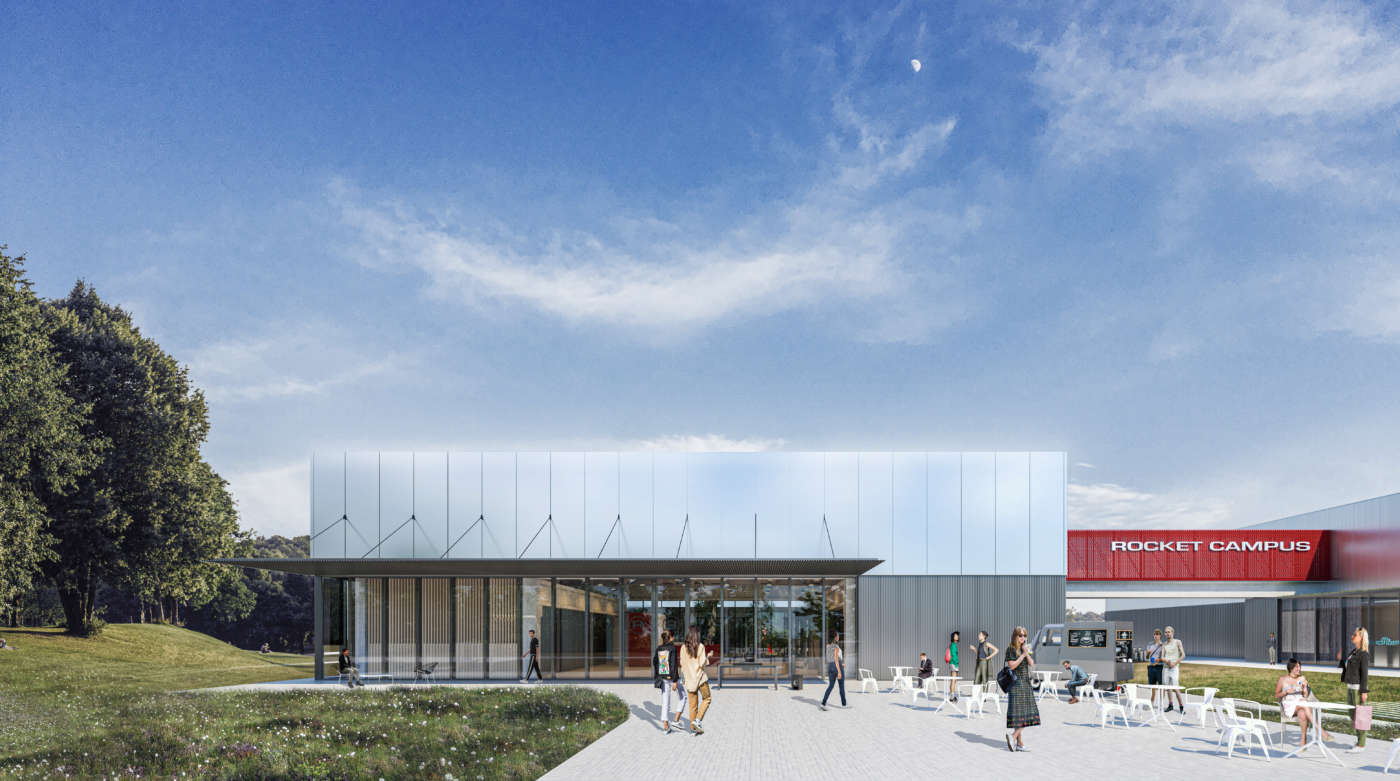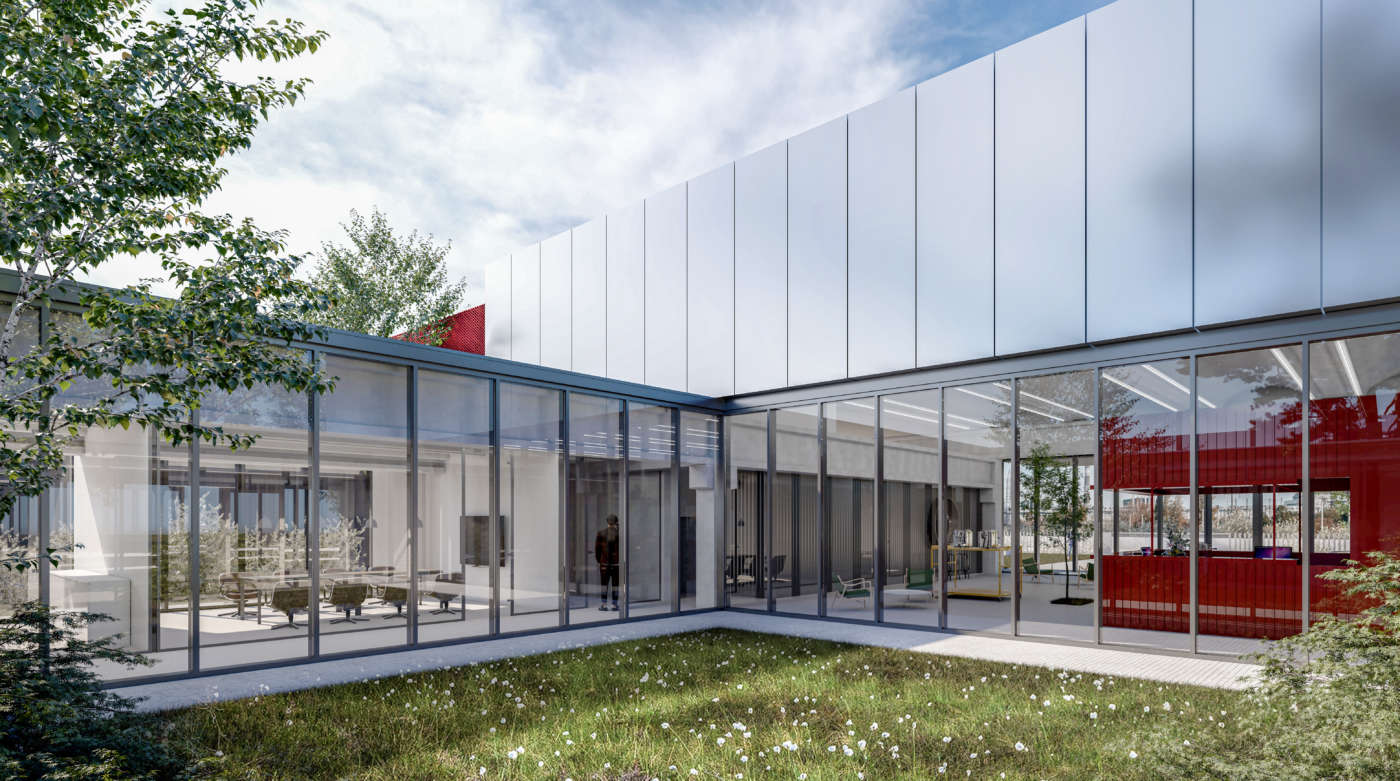Paying tribute to the reputed domestic and commercial espresso machine manufacturer, the Berlin-based architecture practice HEIM BALP ARCHITEKTEN have unveiled their design for the new Rocket Espresso headquarters. Located in the periphery of Milan, Italy, the brand’s historical birthplace, the extensive campus replaces the firm’s three existing facilities, bringing together for the first time administrative, production, and commercial activities. Reflecting Heim Balp’s engagement in communicating culture through architecture, the design builds on the notions of sustainability, transparency, and community as witnesses to the Italian brand’s distinct identity - and commitment to authenticity.

Due for completion in late 2022, Heim Balp’s plans for the new grounds of Rocket Espresso spread across 6.800 mq divided into two main connected buildings. The first encompasses the logistics, production, and storage facility, connected by a bridge to the second, thought as an open office building combining administrative and marketing activities. At its core lies the architects’ consistent espousal of architecture as a means to firmly and conscientiously translate the decades-old company’s character and profound anchoring in 1960s Milan’s iconic design scene - which have led its worldwide recognition as both a specialist tool and a collector’s item.
The comprehensive yet minimalist design is rooted in sustainability. Reflecting at once the brand’s longstanding and meticulous choice of materials and Heim Balp’s receptivity to contemporary demands, the main objective is to reduce waste to a minimum. The environmentally conscious structure is made from existing and repurposed concrete, combined with an assemblage corrugated metal panels, a curtain-wall and a green roof. Expanded across the roof area of the production hall, solar panels consistently contribute in generating the energy necessary to support the factory’s production and the facility’s heating and cooling systems.
Green spaces, and the preservation thereof, are a key feature across the facility. Despite the industrial zoning the project aims at providing the maximum amount of green surface possible due to the direct proximity to the preserved area of Park North Adda River, a large wetland area characterised by the presence of a system of glacial river terraces. The north side of the plot and the administrative building is punctuated with a flourishing internal courtyard and immersed in a new park, the wider plot is surrounded by permeable fencing, allowing the local flora and fauna to grow and circulate freely. A second marker of the design is structural and hereby conceptual transparency. An open space both externally, in how it communicates with its surroundings, and internally, the design is conceived to clearly delineate all steps of the production process - from the research and design to marketing and construction. The most evident indicator of the latter is the red path that weaves through the construction, encouraging visitors to follow and discover the entirety of the process, with the connecting walkway between the two buildings literally bridging two commonly disassociated sectors of production. Transparency is rendered both horizontally and vertically throughout the two main edifices. In the first, Heim Balp’s signature hybrid, transparent façades once again leave their imprint: the flat office building consists of an open lobby space surrounded almost exclusively by windows. In the second next to it, the two-floor production warehouse features a mezzanine providing visitors with an expansive, exhaustive view of the manufacturing phases, from fabrication and assemblage to delivery.
Heim Balp and Rocket Espresso’s core principles lastly coincide with the third founding notion of this new design, that of community. The term campus most fittingly describes a design thought to foster a sense of sharing and belonging both within the company and with wider audiences. Internally, all steps of the production process are brought together under one roof – a single inclusive, egalitarian, flat space. While this demonstrates the brand’s valuing of all stages, and teams, as equally important, this configuration also cultivates an inherent brand culture shared across the entire workforce by virtue of all teams experiencing and communicating within a same space.
To external audiences, the scope and versatility of these headquarters is spelled out in a mixed-use structure. Beyond a factory complex, the infrastructure, driven by the firm’s long-lasting marketing efforts, also positions the site as a cultural hub, mirroring both Rocket Espresso’s brand and its rooting in Milan’s acclaimed modern design scene. Minimalist and clearly articulated, the materials and organization of the space reflect the coffee machine as handcrafted object and brand, and its identifiable character: steel-heavy, resilient, raw. In incorporating distinct yet connected spaces, from the design showroom to the training facility for both barista and domestic use, it acts as an accessible venue, allowing diverse audiences - professionals and amateurs alike - to nurture and expand their attachment to the label.
 Pietro Balp, lead architect and co-founder of Heim Balp Architekten, explains:
Pietro Balp, lead architect and co-founder of Heim Balp Architekten, explains:
“The aesthetics and most importantly the composition of Rocket Espresso’s new headquarters were conceived in close collaboration with and consideration of the brand’s various representatives and users, ranging from engineers and designers to baristas and amateur coffee-makers. By engaging with these diverse, interconnected actors, the design allows them to extend their experience of coffee-making, all-the while demonstrating the enduring red line of authenticity as a key guiding principle in the history and future of the brand”.











